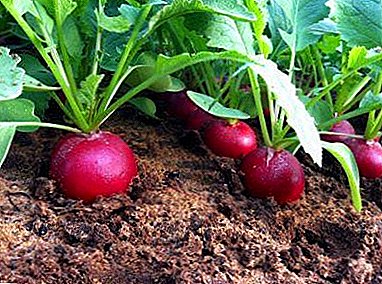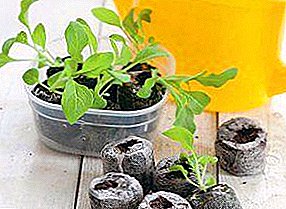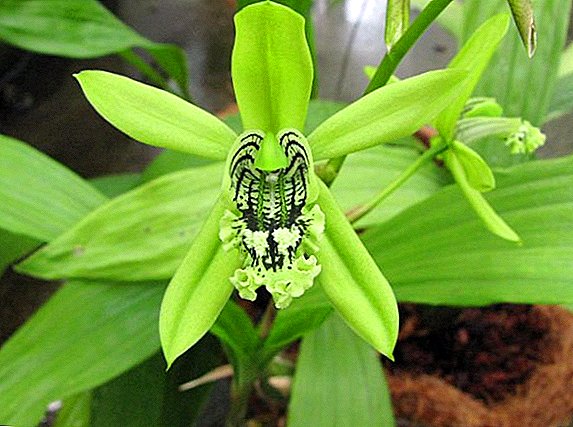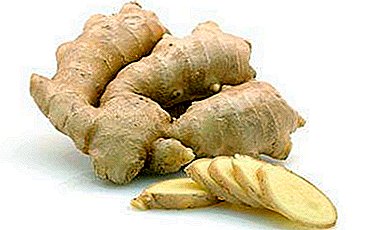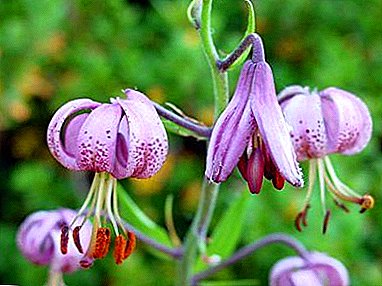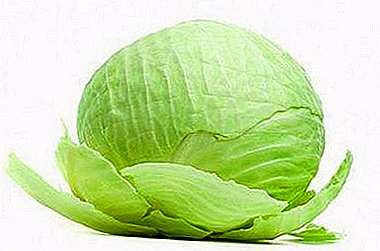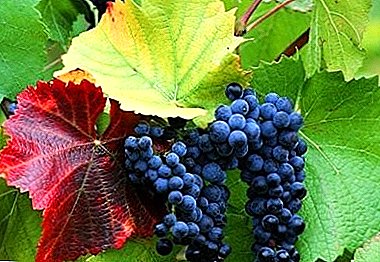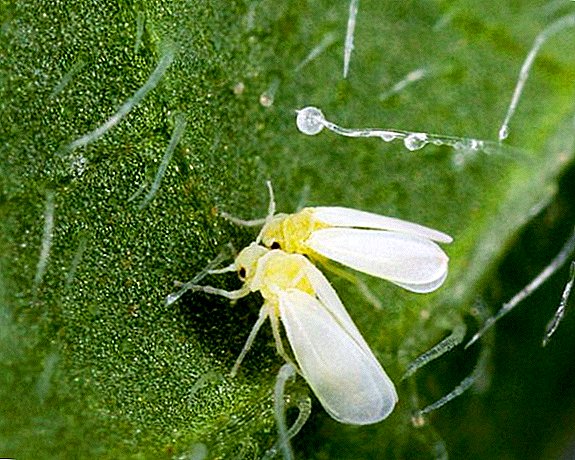 Some twenty or thirty years ago, they did not even hear about such an original dish as edible chestnuts in Slavic countries, not to try or cook in their own kitchen. But the amazing diversity of national traditions in our time is becoming publicly available. Someone tries the Parisian chestnuts in a restaurant during a tourist trip, someone is looking for similar delicacies in the establishments of his country, and someone decides to cook such a dish on his own. Let's understand the usefulness of such a dessert, the rules for its preparation and use.
Some twenty or thirty years ago, they did not even hear about such an original dish as edible chestnuts in Slavic countries, not to try or cook in their own kitchen. But the amazing diversity of national traditions in our time is becoming publicly available. Someone tries the Parisian chestnuts in a restaurant during a tourist trip, someone is looking for similar delicacies in the establishments of his country, and someone decides to cook such a dish on his own. Let's understand the usefulness of such a dessert, the rules for its preparation and use.
Little known dessert
Fruits of chestnut tree became a kind of visiting card of Paris, because there you can meet vendors on the streets, roasting chestnuts in frying pans. The fragrance, which is carried around around, intoxicates and enchants.  This smell, reminiscent of the aroma of freshly baked homemade bread, creates a unique atmosphere of comfort in the open. And having tasted such a dessert, it is difficult to deny yourself another portion.
This smell, reminiscent of the aroma of freshly baked homemade bread, creates a unique atmosphere of comfort in the open. And having tasted such a dessert, it is difficult to deny yourself another portion.
Did you know? This little-known food was popular long before the beginning of our era. For example, in ancient Rome, such a treat was served as a dessert for the upper classes and privileged persons. Alexander the Great, during his long campaign to the East, used chestnuts as a hearty and nutritious substitute for ordinary provisions, thanks to which his army was able to move so far.
These nuts are used to make traditional fried delicacies, soups, souffles, they are ground into flour and bread, sweets and all kinds of pastries are prepared. Also, chestnut wood fruits are served with meat dishes, with asparagus and scallops, added to mousse with oranges and much more.
On cool autumn evenings, chestnuts are the perfect accompaniment to mulled wine, and in the cafe chestnut desserts are perfectly combined with Norman cider.
The tradition of selling roasted nuts on the street is not only peculiar to French cities, but also Italian or Turkish. However, only in Paris there is a special holiday dedicated to chestnuts. The holiday is accompanied by street festivities, songs, competitions and performances of amateur theaters.
What chestnuts can you eat
Someone probably already thought about the fact that chestnut trees are growing in his yard or somewhere nearby, so you can collect their fruits right now and start cooking. But do not rush to conclusions, because not all chestnuts are suitable for eating. For example, the one that grows in your yard belongs to the horse chestnut type, and people do not eat it.
This is a fodder type of fruit that is given to horses and cattle. For man, there are sown forms of chestnut wood.  Chestnut species approved for food include:
Chestnut species approved for food include:
- European planting season;
- garish;
- Chinese (the softest);
- Asia Minor (grows in Armenia, Azerbaijan and Krasnodar Krai).
All other types of chestnut nuts are not suitable for this.
Chestnut is not only a tree, but also edible useful fruits - nuts - chestnuts. Read more about how to germinate chestnut nut, how to plant and care for edible chestnut, also read the list of all types of chestnuts.
To distinguish between edible and inedible fruits of the chestnut tree, there are several basic rules. To distinguish horse chestnut from edible for humans, you can focus on the following points:
- The difference in shape and size of the sheet. Edible chestnut has a more rounded leaf shape, without chipping or jagged edges.
- Differences in the form of inflorescences. In edible species, the inflorescences are flatter, while in horse species they are elongated, shaped like a Christmas tree.
- Taste of ripened fruit. Horse chestnut bitter in taste, seed variety a little sweet.
- Horse chestnut has only one fruit inside (green amniotic capsule), less common is two nuts.
- Plyuska horse chestnut bright green, there are small bumps on it. Sowing variety is characterized by the presence of long thorns and brown color of the pluses.
Both of these varieties are united by only one: their fruits are similar in dark brown color and a smooth surface with a small lighted speck.
Studying the composition
An important point for understanding the value and usefulness of these fruits for the human body is the content of micronutrients, minerals and vitamins.
Vitamins and minerals
It should be immediately noted that chestnuts are a subspecies of nuts, and therefore their composition is very similar. Chestnut fruits are rich in starch, plant fiber, various mineral compounds and amino acids. They also contain folic acid, which is indispensable for our body.  Also here are sucrose, glucose and fructose, vitamins A and E, as well as the entire line of B vitamins.
Also here are sucrose, glucose and fructose, vitamins A and E, as well as the entire line of B vitamins.
Important! These are the only nuts that contain vitamin C.
In addition, chestnut nuts contain many micro and macro elements. Of particular note is the presence of:
- gland;
- potassium;
- sodium;
- phosphorus;
- calcium;
- copper;
- magnesium.
Calorie and BJU
This product is quite high in calories, as there are 180 calories in 100 grams of nuts. At the same time, more than 60% of the product is energetically valuable carbohydrates, more than 30% is given to proteins and fiber, and less than 10% remains for fats.  These nuts are the least fatty, so vegetarians and people who watch their weight often include them in their daily diet. At the same time, the fruits of chestnut wood are very nourishing and nutritious, they satisfy hunger for a long time and are not deposited in problem areas. Yes, and the fats in them are only saturated, and they are quickly recycled by the body.
These nuts are the least fatty, so vegetarians and people who watch their weight often include them in their daily diet. At the same time, the fruits of chestnut wood are very nourishing and nutritious, they satisfy hunger for a long time and are not deposited in problem areas. Yes, and the fats in them are only saturated, and they are quickly recycled by the body.
Read about the beneficial properties of nuts such as: Manchu, walnut, green, Brazilian, pine, pecans, hazelnuts, hazelnut and cashews.
Is it possible to eat raw chestnuts
Chestnut nuts can be eaten raw, that is, just from the tree. But first it is necessary to peel and gloss film from the fruit. This process is quite time consuming, so it will be much easier to prepare them. There are many recipes on this subject, and you will definitely find something to your liking.
In addition, raw fruits do not have that amazing and alluring aroma, and therefore you will not get any special, memorable impressions of such a dish. 
How to cook delicious treat
A little work in the kitchen, you get a dish with a special taste that will not leave anyone indifferent, and your house will be filled with pleasant and romantic aromas of Paris itself. Below we have listed a few basic options for making chestnut fruit.
Roasted Chestnuts
For this dish you need:
- wooden plank;
- knife;
- spatula or spoon to turn chestnuts;
- a frying pan with a lid (best of all old, as brown nuts leave unwashable stains and often burn).
Important! On the electric stove it will not be possible to roast chestnuts correctly. For the best preparation you need an open fire, or at least a gas stove.
Oil, salt and any other ingredients and tools will not be needed.
Ingredients Required
Edible chestnuts (as much as fit in your pan).
Step-by-step recipe
- Wash nuts thoroughly.
- Each fruit should be cut, but not to the end, but approximately to the middle. So your nuts get ready faster.
- Now put the nuts on the pan, flat side down.
- Fry for five minutes on the fire, cover the pan with a lid so that the fruits do not dry out.
- Turn the nuts. By this time they will be much open. If the flat side of the fetus is blackened, then it is necessary to reduce the fire. Next, close the roasting nuts loosely with a lid and torment for another ten minutes.
- Then you should once again prevent the fruit and rearrange them on a small burner of a gas stove, or reduce the fire even more.
- In this mode, the fruit should hold in the pan for another fifteen minutes, after which they can be laid out on a plate.
- Wait until the nuts have cooled, then proceed to clean them from the burnt peel.
It is best to eat chestnuts immediately after cleaning, while they are still warm. When they cool down completely, the taste will fade slightly.
Boiled chestnuts
The difference of this method of preparation from the previous one is that during cooking the chestnuts do not explode, and therefore it is not necessary to make punctures or cuts.
Ingredients Required
Edible chestnuts and water.
Step-by-step recipe
- Fill the chestnut tree with water. Those that come up are not usable. They should be removed.
- Pour the fruit into the pot and cover with water so that the water covers them completely.
- After boiling, cook for twenty minutes, then drain the remaining water and another five minutes in a saucepan with the lid closed.
- Next, you need to put the nuts on a plate and, after cooling a little, peel them. You should not tighten with cleaning, since it will be more difficult to peel off when completely cooled.
- Such nuts can be added to soups and souffles, stuffed poultry with them, or even make mashed potatoes of them. To do this, add milk and butter to the nut mass, just like for mashed potatoes. In general, chestnut has a lot in common with potatoes, including taste.
Baked products
The third universal way of cooking chestnuts is roasting. This recipe is one of the fastest.
Did you know? In ancient Greece, on the streets of many cities one could find whole groves of chestnuts, thanks to which the inhabitants fled from starvation during numerous wars, accompanied by sieges. The first trees planted by the Greeks in the colonial cities on the Black Sea coast were chestnuts.
Ingredients Required
Edible chestnuts and parchment.
Step-by-step recipe
- First wash and dry the fruits of the chestnut tree on the towel.
- Make a cross-shaped incision on the convex side of the fruit. If this is not done, they may explode.
- Lay the nuts in cuts up (flat side down) on the baking sheet, before laying it on the bottom with parchment paper.
- Bake at 200 ° C for 15-17 minutes.
- Put the prepared nuts on a plate and peel.
Is it possible to chestnuts
Let's find out what the situation is with pregnant, lactating women, babies and children, because they, too, will want to enjoy all the delights of delicacy.
Pregnant and lactating
These fruits are advised to use people with depression, with stress and overload, as well as with the depletion of the body. It is in a situation of depletion of microelements and vitamins that all pregnant and nursing mothers are found, since part of the resources of their body are transferred to the child.
Therefore, to eat chestnuts is not just possible, but necessary for all pregnant and lactating - these nuts are rich in many vital compounds, including folic acid, which affects the increase in the amount of breast milk.
They also have a low calorie content, which is important, because during pregnancy women often gain extra pounds. Fruits of chestnut wood are completely harmless from this point of view.
Important! The potassium content makes chestnuts a good way to prevent hypertension, eliminate the risk factor for cardiovascular diseases, anemia (anemia). In particular, they help to improve blood circulation and regulate blood pressure.
More facts about the beneficial properties of chestnuts:
- Vitamin B2 reduces the effects of aging skin; it also has a positive effect on eye health;
- bones and teeth strengthened due to the high phosphorus content;
- insomnia is prevented due to the presence of an amino acid such as tryptophan;
- nuts protect the nervous system due to the high content of vitamin B and phosphorus;
- high fiber content helps digestion;
- chestnuts are recommended for kidney disease, due to the high potassium content;
- help improve memory;
- good for hypertension and cardiovascular diseases.
Infants and children
Babies are not recommended to start feeding with chestnuts, as this will be too heavy a product for their still weak stomachs. It is worth remembering that up to six months the baby’s body is fully supplied with all the necessary trace elements and vitamins from mother’s milk.  Therefore, it is possible to enter chestnuts into the child's diet only from one year, and preferably from three years old, when the stomach is already able to perceive and digest such food.
Therefore, it is possible to enter chestnuts into the child's diet only from one year, and preferably from three years old, when the stomach is already able to perceive and digest such food.
Important! Enter into the diet of the child chestnuts should be gradually, not zealous. In this way, the stomach will be able to better adapt to the consumption and digestion of heavy foods.
For the rest, there are no restrictions. For children, as well as for adults, these nuts will be very useful.
Who can not eat chestnuts: harm and contraindications
Most, if not all, food products have both positive and negative sides. Chestnut nuts are no exception. The main contraindications can include:
- individual intolerance;
- diabetes;
- atonic constipation;
- gastritis;
- poor blood coagulation;
- thrombocytopenia;
- liver and kidney disease;
- menstrual disorders;
- susceptibility to allergies;
- tendency to corpulence.
 If you do not neglect these recommendations, then you will not be able to inflict any harm on you and on your body. The main thing - to comply with the measure. Introduce this product into your diet gradually, watching the reaction of your body. If allergic manifestations are not observed, you can safely increase the ration.
If you do not neglect these recommendations, then you will not be able to inflict any harm on you and on your body. The main thing - to comply with the measure. Introduce this product into your diet gradually, watching the reaction of your body. If allergic manifestations are not observed, you can safely increase the ration.Those who could not enjoy the romantic aromas on the streets of Paris can arrange their own corner of France at home, filling their kitchen with the unique smell of roasted nuts. This delicacy will not leave anyone indifferent, besides, it has many valuable and useful properties that will help maintain the vitamin and mineral balance of your body. There is a dessert from the fruit of chestnut wood is not only pleasant, but also useful.


